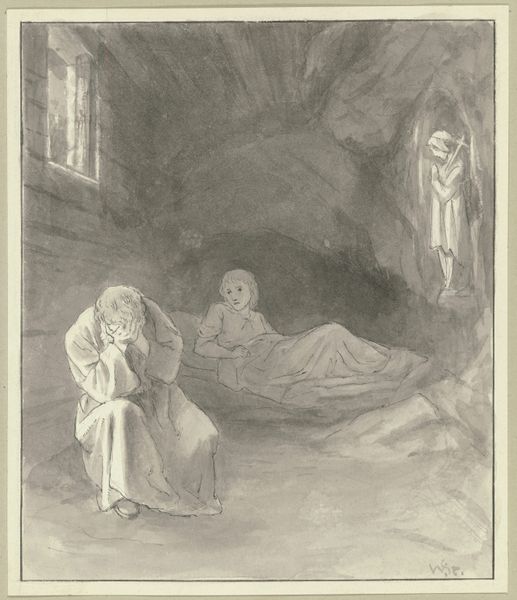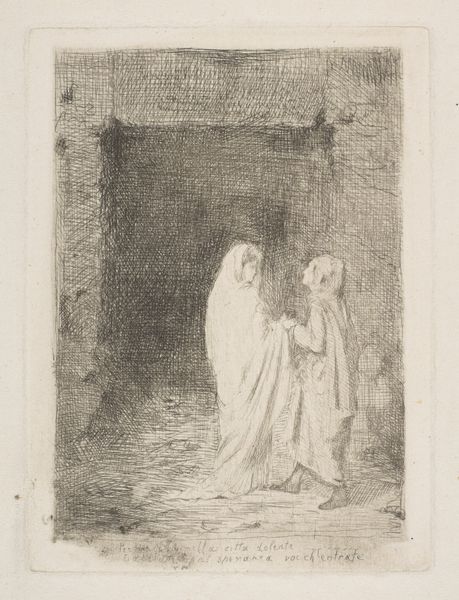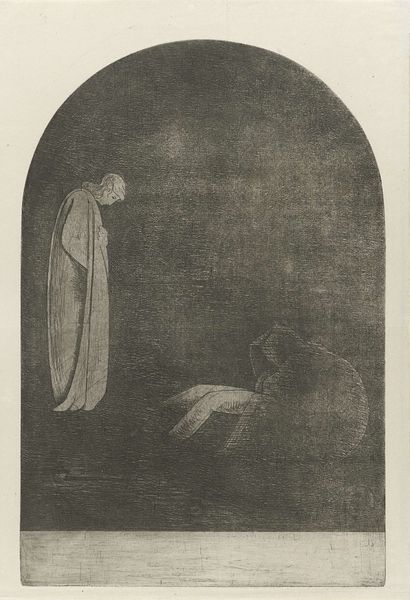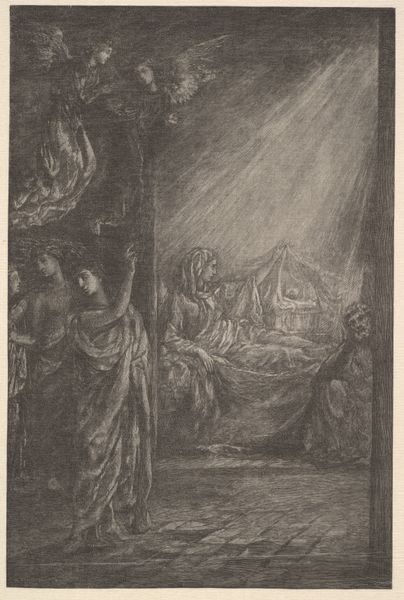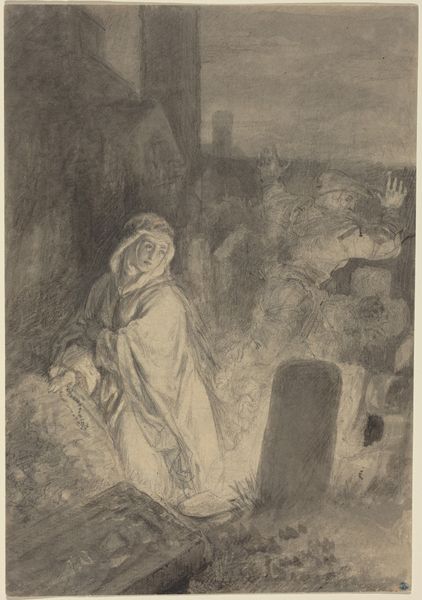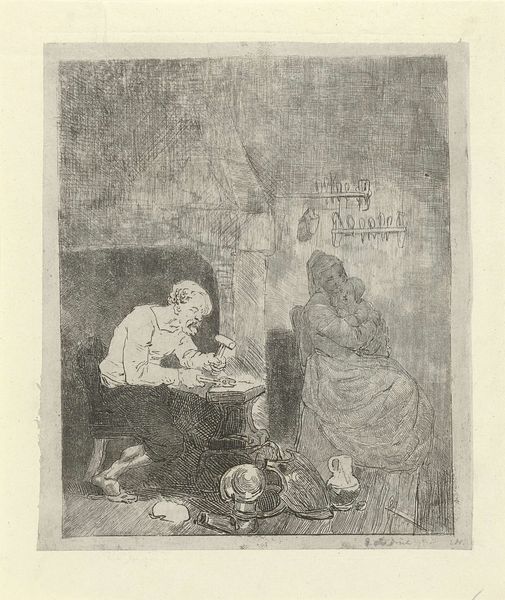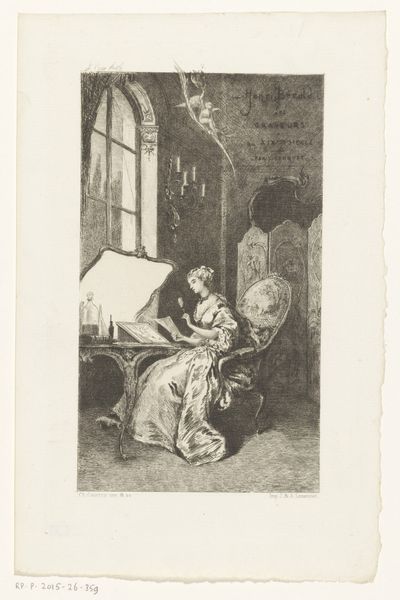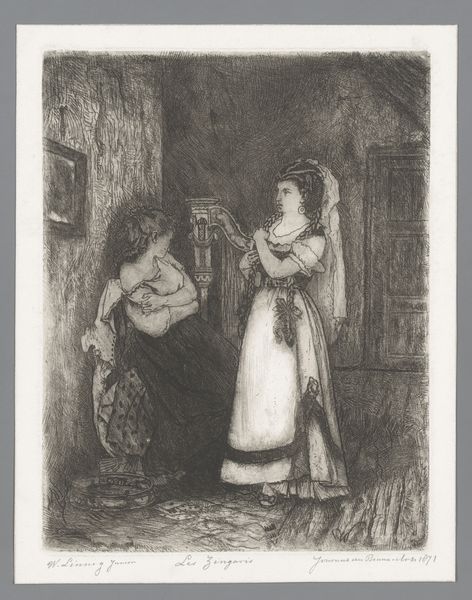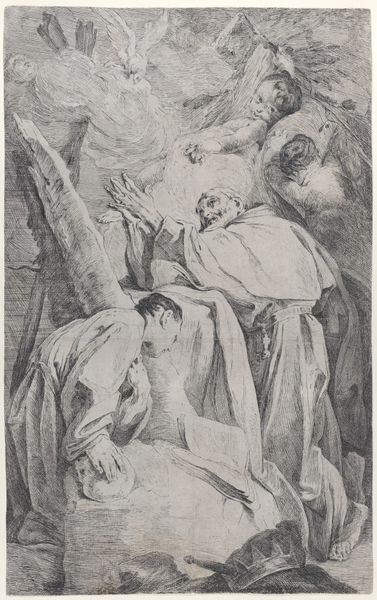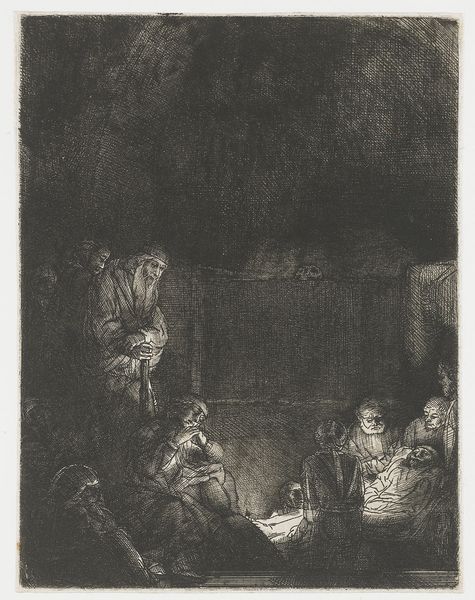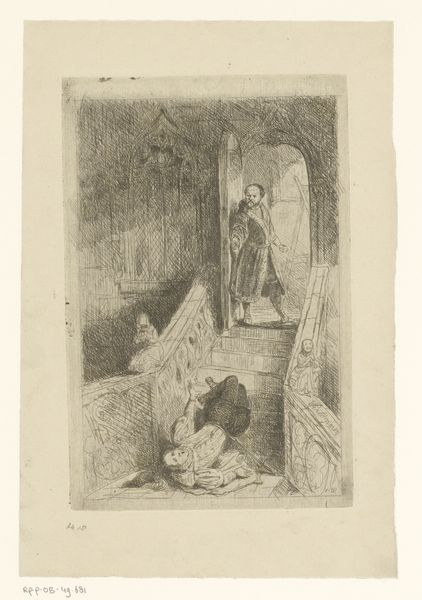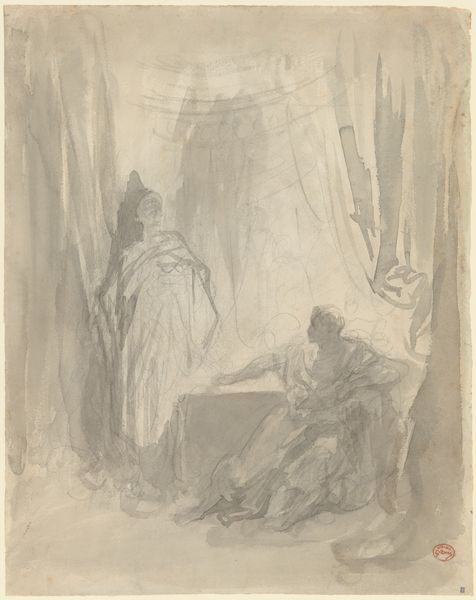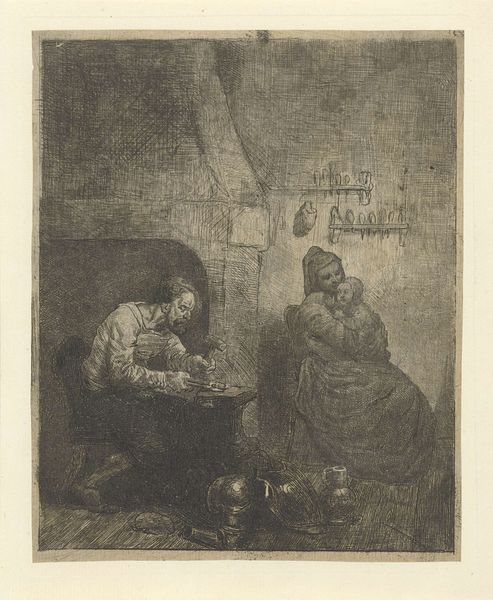
Copyright: Public Domain
Editor: We're looking at "Am Tisch sitzender Mann (Brun_) in einer Felsnische," a chalk, charcoal, and graphite drawing from around 1884 by Wilhelm Steinhausen. It's a very somber piece. The figures seem trapped, lost in thought, and it's making me wonder what kind of narrative is at play. What do you see in this work? Curator: The cavernous setting and the figures within are rich in symbolic weight, hinting at layers of cultural memory. Consider the cave itself; across cultures, it’s a site of refuge, but also of the unknown, a place of initiation and potential spiritual rebirth. Editor: Rebirth? I didn’t pick up on that at all. Curator: Look at the figure standing with a cross-like object in the back. How does that influence your understanding? That object is not only related to themes of religion and iconography, but can equally symbolize hardship, sacrifice, redemption… All recurring visual motifs. This cross connects past to present, echoing historical burdens within the intimate spaces of the psyche, within that family. Steinhausen is evoking complex cultural symbolism, linking individual emotions to broader social and religious themes. Editor: That's a powerful connection. The pose of the seated figure now reads like an acknowledgement of all this sorrow and maybe even a reflection of those traditions. Curator: Indeed. Visual motifs echo collective identities. Art acts as a repository for cultural experiences. Editor: It’s amazing how a drawing can contain such a weight of meaning. I’ll definitely look at images differently.
Comments
No comments
Be the first to comment and join the conversation on the ultimate creative platform.
